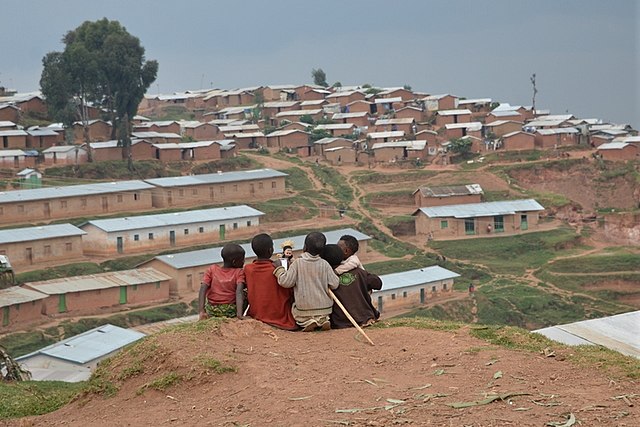Books & Culture
10 Novels about the Struggle for Revolution around the World
Revolution isn’t pretty, but the stories that emerge are always compelling

The Fourth of July is just a few days away. What better weekend to do some revolutionary reading? There are thousands of books about the American Revolution you could pick up on your way to the beach or to that backyard cookout, from schooldays favorite Johnny Tremain to David McCullough’s monumental 1776. But the American colonists were hardly the first, or the last group of rebels to band together to fight for their independence.
This year, why not look abroad for your Independence Day fix?
The desire for independence seems to unite cultures around the globe. The Merriam-Webster Dictionary defines independence as the time when a country or region gains political freedom from outside control. Dictionary definitions can only go so far in the best of times, and here it falls far short of encompassing all that independence means. Fortunately, there is literature.
The novels on this list encompass the many aspects of the struggle for independence: the spark of freedom, the violence (often terrible), the loss of life, the stress of self-realization and the questions of identity that follow.
Revolution isn’t pretty, but the stories that emerge are always compelling.
The Partition of India and Pakistan: Midnight’s Children by Salman Rushdie
It’s hard not to love the set-up for Rushdie’s Booker’s-prize winning novel: 1,001 babies are born at the stroke of midnight on the eve of India’s independence from Britain, each imbued with special powers. The book follows one baby in particular, Saleem Sinai, as he grows up and his family migrates around the subcontinent. Using a blend of allegory, magical realism, and historical fiction, Rushdie intertwines Salem’s growing pains with the growing pains of a new nation, and a country newly divided.
Irish War of Independence: A Star Called Henry by Roddy Doyle
Like Ireland herself at the turn of the century, Henry Smart is born without status or privilege. Surviving the slums of Dublin with an alcoholic teenage mother and a one-legged, whore-house bouncer of a father prepares Henry to fight, and fight he does. Henry becomes a soldier and hit man for the (real life) leader of the Irish Citizens Army, Michael Collins. What makes Doyle’s novel such an interesting read is his ear for voices and setting. Lest you forget, the Irish revolution didn’t take place in a vacuum, it took place on the rowdy, rumbling streets of Dublin.
South African Apartheid: Burger’s Daughter by Nadine Gordimer
Set in the mid 1970s, Gordimer’s novel follows Rosa, a white Afrikaner whose parents are anti-apartheid activists in South Africa. Rosa’s parents are imprisoned for wanting to overthrow the South African government and, after they die there, Rosa is left to deal with their legacy. Gordimer’s book, which was banned in South Africa, asks some difficult questions about the fractured struggle for independence and how a multiracial society could come together after Apartheid fell.
The Iranian Revolution: Persepolis by Marjane Satrapi
Satrapi’s story of growing up in Iran during the Islamic revolution makes for a powerful graphic novel. The revolution occured in 1980, when Satrapi was six, and she details how her life changed under Islamic law, from wearing a veil to a sudden segregation from the boys at her school. Satrapi’s memoir reminds us that revolutions bring change, whether its welcomed or not.
The Mexican Revolution: The Death of Artemio Cruz by Carlos Fuentes
The Mexican Revolution began in 1910 when President Porfirio Díaz was ousted from power. Fuente’s dreamlike novel begins years later, when ruthless ex-soldier and businessman Artemio Cruz is on his deathbed. The novel is a series of flashbacks recalling Cruz’s life and how he capitalized on the time of war to kill, blackmail, and bribe his way to power.
The October Revolution of Russia: Doctor Zhivago by Boris Pasternak
This epic novel traces Dr. Yury Zhivago from his childhood in czarist Russia through the October revolution and the Russian Civil War, ending during Stalin’s regime in World War Two. As the revolution unfolds, it becomes clear to Zhivago that there’s more than one way to be a dangerous citizen: through violence, or by becoming a stooge of the revolution. It’s a sad revelation that after fighting for independence from the Czar, independent thought is crushed in the name of Mother Russia.
The American War in Vietnam: The Sympathizer by Viet Thanh Nguyen
In English-language literature and film, the story of the Vietnam War has mostly been told though the eyes of Americans. In his Pulitzer Prize-winning novel, Viet Thanh Nguyen gives us the view from the other side, namely a Vietnamese army captain who’s living in the US as a spy. This is a story of a war for independence; Vietnam had just freed itself from the shackles of French imperialism when it came under the American sphere of influence. But for the captain, as for most Vietnamese, there is an added layer of misery, because as North fought South, it was a civil war as well.
The Cultural Revolution of China: Balzac and the Little Chinese Seamstress by Dai Sijie
This novel by Dai Sijie takes on a different kind of war of independence. During Mao’s Cultural Revolution, two teenage boys are sent from their home in Chengdu to a mountain village to be “re-educated.” During their time in the village, they meet the “Little Seamstress” and all three become romantically involved. Love triangle aside, this novel is motivated by the boys’ relentless quest for the art and culture they’ve been forced to abandon. Mao’s forbidden music, literature, and films are a defining part of the boys’ identities and they risk everything to keep them.
The Egyptian Revolution: City of Love and Ashes by Yusuf Idris
Yusuf Idris set his award-winning novel in a specific time and place: Cairo, January 1952. The proceeding months saw the demise of the Egyptain monarchy under King Farouk, a puppet government controlled by the British. City of Love and Ashes is the love story of two young rebels, Hamza and Fawziya, as they fight for Egypt’s freedom and grapple with the question of how to shape a post-colonial identity.
The French Revolution: A Tale of Two Cities by Charles Dickens
A Tale of Two Cities is one of the most famous novels about the French Revolution (and has one of the most quotable opening lines). The novel jumps back and forth between London and Paris and a wide cast of characters, first exposing the brutal life of French peasants — and the British poor — in the years before the Revolution. As the French Revolution unfolds, the violence, unwarranted imprisonment, and general misery ramps up. The final scenes point to a hopeful future for France, but as with most revolutions, Dickens underscores that the cost to human life is high.








